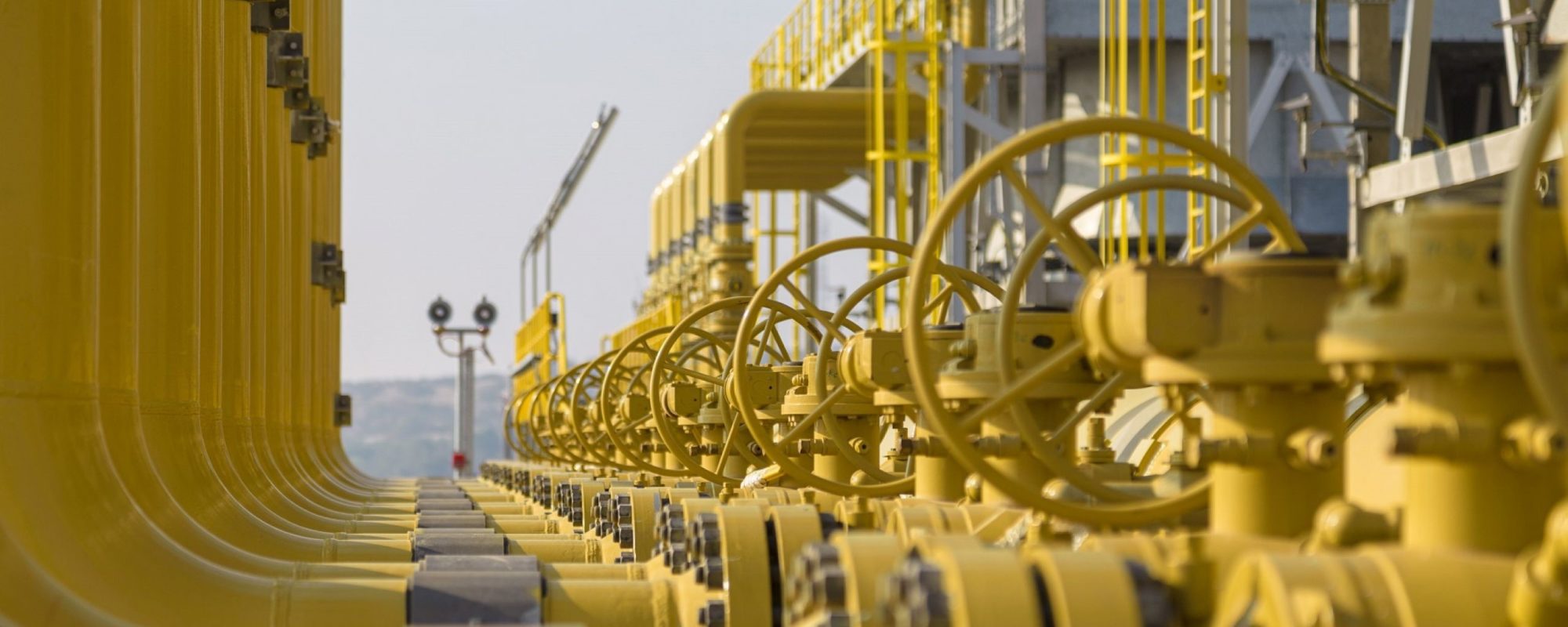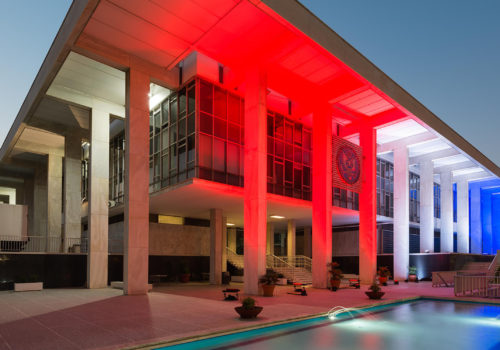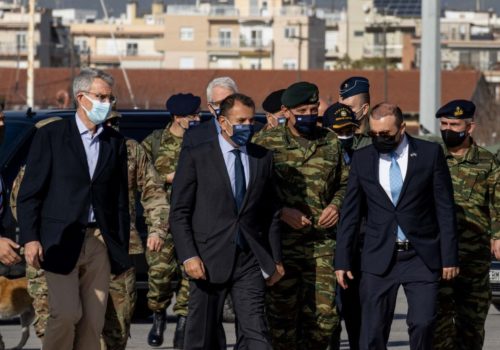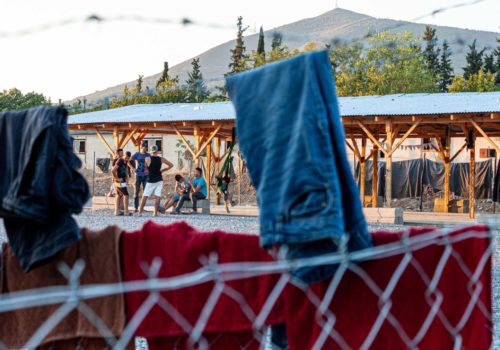HASKOVO, Bulgaria — The woman at the entrance to the AVAX construction camp greeted me in Bulgarian-accented Greek, an unexpected welcome since I’d been using English almost exclusively while traveling through Sofia and the southern city Plovdiv. She handed me a visitor’s pass and directed me to park in a dirt lot beside a warehouse and an L-shaped stack of portable containers serving as office units.
I had driven up from my base in northern Greece to explore the historical region of Thrace and visit the construction site of the Natural Gas Interconnector Greece-Bulgaria (ICGB), a new 182 kilometer pipeline connecting the Greek and Bulgarian national gas networks that is due to be completed in late June. Stretching from the Greek town of Komotini to the Bulgarian town of Stara Zagora, it will bring gas from Azerbaijan via the Trans Adriatic Pipeline (TAP) to Bulgaria for the first time, breaking Russia’s gas monopoly within the country and eventually, if the plan succeeds, the wider Balkans.
The project’s completion comes at a critical time. Russia provided 90 percent of Bulgarian gas until April 27, when it halted supplies to Bulgaria and Poland. Since then, Bulgaria has depended entirely on Greece to meet its gas needs. Russia’s state-controlled gas monopoly Gazprom also reduced flows to Germany, Italy, Slovakia and Austria by as much as 60 percent as the EU backed Ukraine’s membership in mid-June, the latest escalation over the Kremlin’s war that has sent energy costs skyrocketing as European countries rush to find alternatives to Russian gas.
In addition to meeting its own energy requirements, Greece is well positioned to help break the Balkan dependence on Gazprom. The country has marketed itself as an up-and-coming regional energy hub, and several projects scheduled to come online in the next year indeed promise to help enable the energy independence of its northern neighbors, which have relatively low gas needs and are vulnerable to Russian interference.
My road trip through southern Bulgaria reinforced my sense of Thrace as a contiguous strategic region across borders between East and West, not only in energy. Emerging from Sofia’s central Serdika metro station amid Roman ruins, I was amazed by the mix of cultures inside the “Square of Tolerance”: a mosque, synagogue, Catholic cathedral and Orthodox church all within a few blocks of each other. In Plovdiv, 145 kilometers southeast, I crossed the Maritsa River, which separates Greece and Turkey before emptying into the Thracian Sea near the port city of Alexandroupoli where I am based. And at the 3,000-year-old city of Nessebar, I wandered through Hellenistic ruins and Byzantine churches, evidence of Greece’s centuries-long communication with settlements along the Black Sea coast, including in modern-day Ukraine.
Greek Thrace has become the center for three regional energy projects that are now coming to fruition. In addition to TAP and the nearly finished ICGB pipeline, a second liquefied natural gas (LNG) terminal, the Alexandroupoli Floating Storage and Regasification Unit (FSRU), is scheduled for completion at the end of 2023. This month, I visited the sites of these three projects to learn whether they are strengthening Balkan energy cooperation as promised while offering southeastern Europe alternatives to the Russian gas monopoly. If all goes according to plan, Greece’s early investments in energy diversification could soon make it an even more important partner for the Balkans and beyond.
The danger of dependence on Russian gas
Gazprom last cut natural gas supplies to Europe in January 2009 during a pricing dispute with Ukraine. At the time, countries along the Western Balkan pipeline route, including Romania, Bulgaria, North Macedonia, Turkey and Greece, were among the most affected. Since then, Greece has reduced its dependence on Russian gas from 82 percent to about 40 percent with projects like TAP and the expansion of the Revithoussa LNG terminal in the Gulf of Megara, 45 kilometers west of Athens. The terminal receives LNG deliveries by ship from Algeria, Qatar, Egypt and the United States.
Although Greece’s landlocked neighbors rely almost entirely on Russian gas, the volumes needed to ensure Balkan energy security are modest compared to those of other European countries. That means Greece’s promise to secure energy supplies for vulnerable countries like Bulgaria, North Macedonia, Serbia and Ukraine seems achievable.
Between TAP and the new projects currently underway, Greece will soon have the potential to transfer 30 billion cubic meters (bcm) to Europe and the Balkans annually, former Minister of Environment, Energy and Climate Change Yannis Maniatis estimated in a recent interview.
Greece itself consumes nearly 6 bcm of gas per year, while Bulgaria uses 3 bcm. By contrast, Italy consumes 70 bcm and Germany, the world’s eighth largest consumer, uses 90 bcm, two-thirds of which came from Russia in 2021.
But with limited gas supply and each country fending for itself, energy security is quickly becoming “a zero-sum game” according to Greek Prime Minister Kyriakos Mitsotakis’ recently appointed chief energy adviser Nikos Tsafos. “For any one country, diversification is perhaps easy,” he wrote in an opinion piece for Kathimerini. “But once everyone does it, the math gets harder. As one country improves its security, others confront fewer options.” Europe must increase gas production through 2030, he argues, without which energy independence from Russia would be “nearly impossible and prohibitively expensive.”
At the outbreak of the war, Germany, Russia’s largest gas customer, suspended launching the Nord Stream 2 pipeline, an $11 billion project to bring Russian gas to Germany via the Baltic Sea that was in its final certification stages. The United States has long opposed the pipeline, arguing that it would increase Russian influence in European affairs. Indeed, many suspect Russian President Vladimir Putin of cutting natural gas exports to Europe by 23 percent in fall of 2021 to keep prices high and pressure Germany to approve the pipeline.
“Right up until February 24, we were still having the debate with Germany over Nord Stream 2,” the former US Ambassador to Greece Geoffrey Pyatt, President Biden’s nominee to lead the State Department’s Bureau of Energy Resources, told me about the date Russia launched its invasion of Ukraine. As ambassador to Ukraine from 2013 to 2016, he had witnessed Russia’s weaponization of energy first-hand, including its price hikes, supply cuts and attempts to divert gas from Ukraine to starve Kyiv of much-needed transit fees for delivering supplies to Europe.
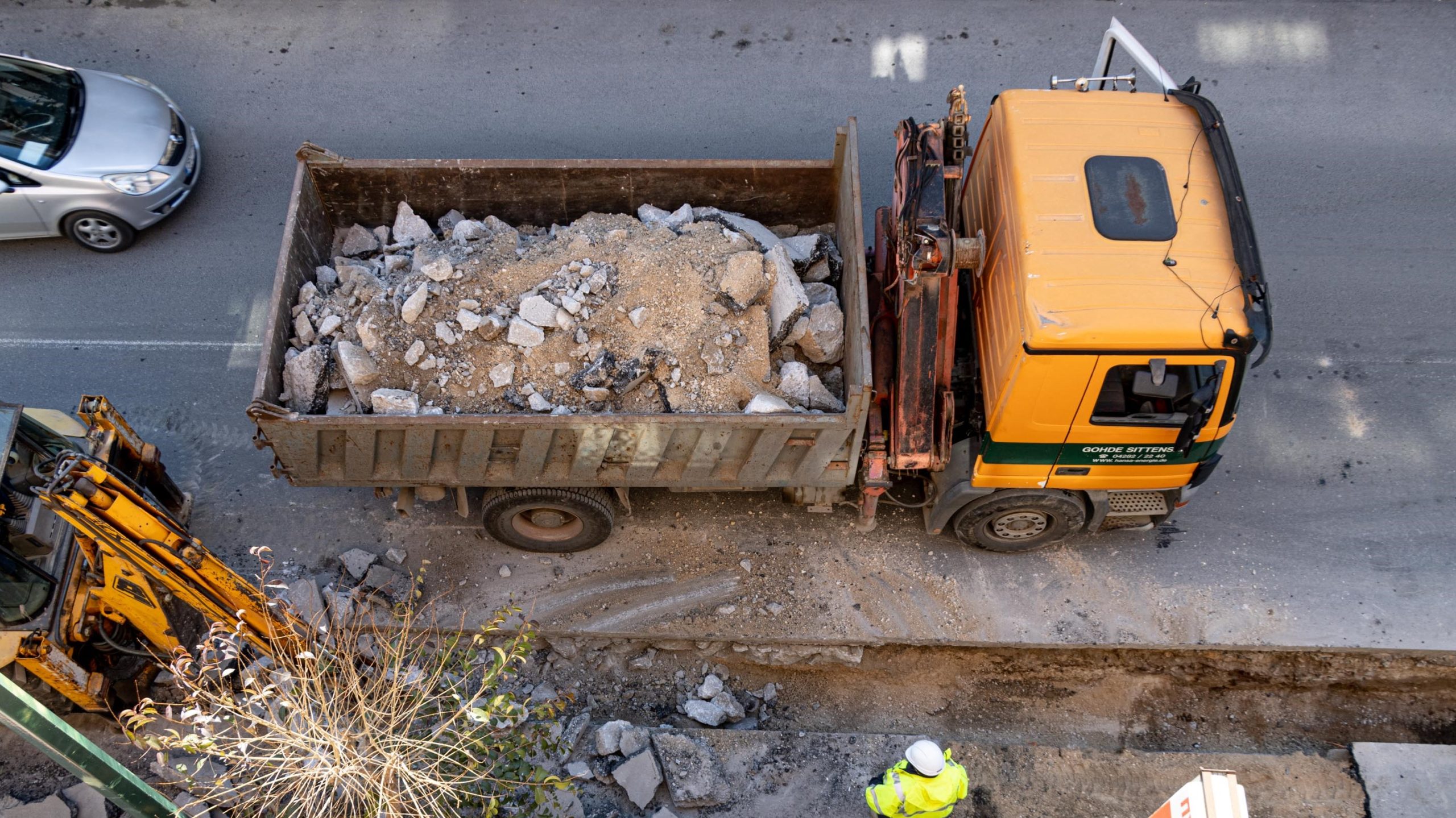
Berlin had plenty of critics besides Washington. “This is a failure of European policy,” a source from the Greek energy market not authorized to speak on the record told me about Germany’s continued dependence on Russia. “There’s a paradox here. We’re in conflict, but we still support Russia. Meanwhile, Russia uses Europe’s money to finance its war machine.”
War isn’t the only issue. Greek demand for gas has increased in recent years as the country begins to retire its more polluting lignite plants. Primarily composed of methane, natural gas is the world’s cleanest burning hydrocarbon, a so-called transition fuel energy executives promote as the best option until more renewable energy sources like green hydrogen can reach the market.
In Alexandroupoli, construction workers laid a natural gas pipeline in February along Leoforos Dimokratias, the main thoroughfare. Meanwhile, gasoline prices in the city have risen from 1.697 euros to 2.459 euros per liter since the start of the year. The Greek government has announced subsidies for soaring gasoline and electricity costs, while inflation in April reached a 28-year high of 10.2 percent year on year.
“In retrospect, it’s very clear that allowing that kind of hard-wired dependence on Russian gas is very bad for European security,” Pyatt said of the developments. “I don’t think anybody will ever want to go back to that situation again.”
Thrace’s pipeline projects
TAP is part of the 3,500-kilometer Southern Gas Corridor, which carries natural gas from Azerbaijan across Turkey to Europe. The 878-kilometer pipeline stretches across Thrace and Macedonia, passing through southern Albania and under the Adriatic Sea, ending at the heel of the Italian boot. It commenced operations in early 2021 and transmits 10 bcm of gas to Europe per year. Approximately 1.5 bcm is delivered to Greece and Bulgaria while the vast majority, 8.5 bcm, goes to Italy. In 2021, TAP accounted for 20 percent of Greece’s natural gas imports.
On a clear blue morning in mid-May, I visited the TAP compressor station near the Greek border checkpoint of Kipoi, where Azerbaijani natural gas from Turkey first enters the route. This station on the Greek-Turkish border receives gas from the Trans-Anatolian Natural Gas Pipeline (TANAP) and pushes it down the line to Albania. There, another compressor station pushes the gas under water to Italy.
Konstantine Chalatsopoulos, TAP’s Operations and Maintenance Manager in Greece, gave me a detailed tour of the site. He had black, rectangular glasses and a touch of white in his beard.
Originally from the port city of Volos in central Greece, he studied at the University of Aberdeen in Scotland and spent 13 years working at gas plants in the United Kingdom and Dubai. He returned to Greece with his family at the start of the Covid-19 pandemic and took his current position when the station opened in 2020.
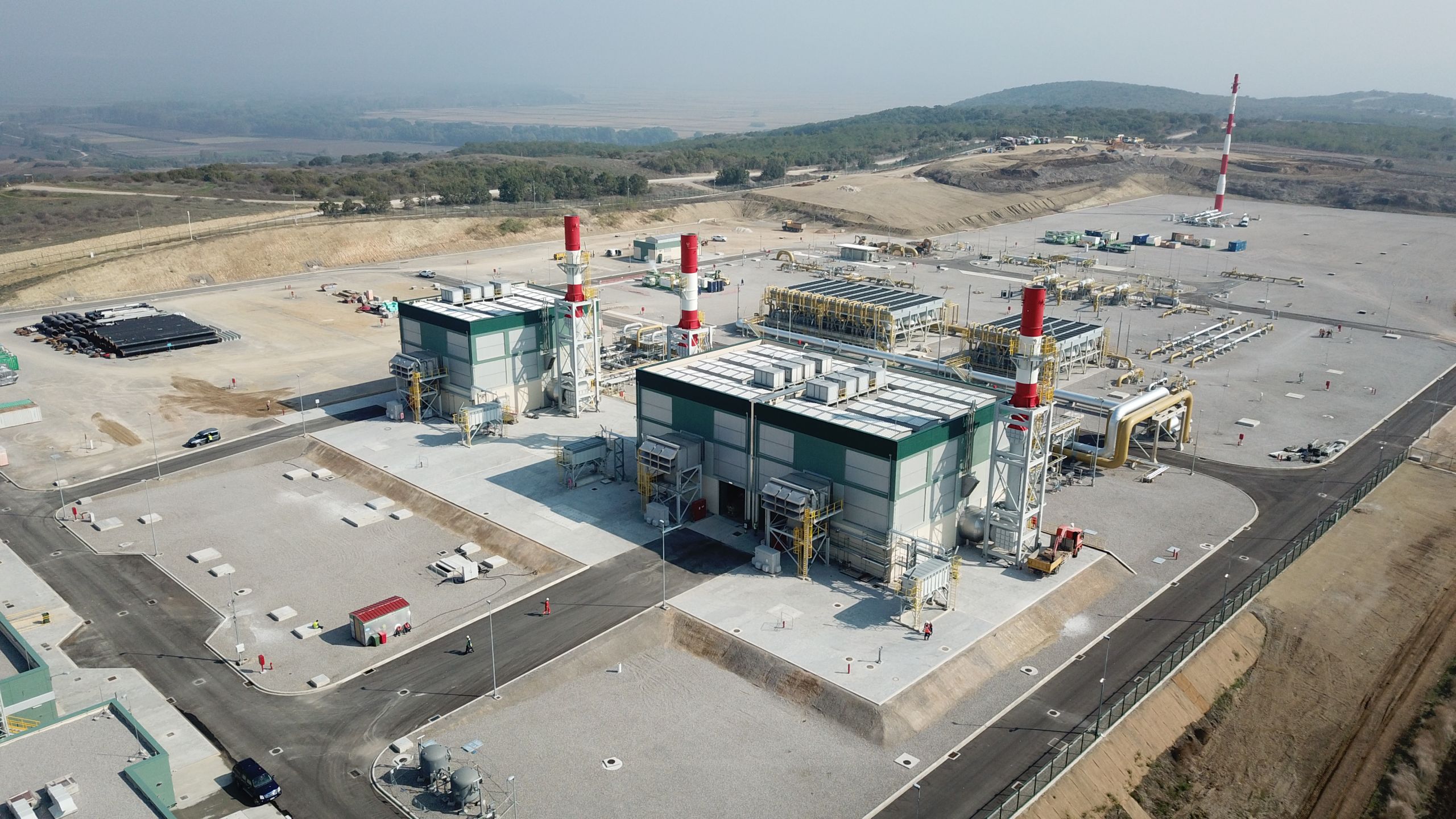
Clad in red coveralls, solid black work boots, eye shields and helmets, he led me through the site, explaining every step of the process. At the perimeter fence, he showed me the yellow metal posts marking TAP’s underground path as it entered the station. In the control center, he toggled through schematic panels so I could see how the incoming gas was filtered and cleaned, measured, compressed, cooled and then sent out down the pipeline.
He was a good teacher, and as we walked through the site, he used numerous metaphors to explain the process. Most interesting for me were the compressors, which increase the pressure of the gas so that it flows through the pipeline and across different elevations. Housed in three green buildings in the center of the site, two compressors operate at all times, while the third is held in reserve. Each is powered by a 15 megawatt gas-burning turbine, similar to an airplane turbine without its cover. I was surprised to find that the compressor itself, the heart of the facility, was a round drum only an arm’s length in diameter.
The gas day begins at 7 a.m., when Chalatsopoulos and his team receive an order from the main dispatch in Italy. They are responsible for making sure the gas gets delivered as scheduled. “The first year of operation was challenging. I had to make everything compatible and finetune the process,” he said. “It’s okay if everything is working properly, but troubleshooting can be difficult. There are lots of moving parts.”
Within the next year, market demand will determine whether TAP expands its capacity, transferring up to 20 bcm per year and increasing current supplies to Greece and Italy. That upgrade would take about five years to realize and involve the construction of two additional compressor stations, one in Albania and another in northern Greece. If the expansion plan is approved, Chalatsopoulos will be tasked with getting the second Greek station up and running and integrating it with the sites currently in operation.
Driving from Alexandroupoli toward Komotini on Via Egnatia, you can see a power station on your right-hand side. This is the industrial zone of Komotini, where TAP will connect to the ICGB, Chalatsopoulos told me. Analysts estimate that TAP will serve 1 bcm of Azerbaijani gas to Bulgaria—one-third of its current need.
Officials have committed to complete the pipeline this summer with the goal of bringing it online before the winter heating period begins in October. That target has become especially important since Russia cut off gas supplies to Bulgaria in April. “For Bulgaria, the ICGB is existential,” Pyatt, the former US ambassador, told me. “It is the only way that Bulgaria is able to escape its dependence on Gazprom and Russian gas.”
Despite the importance of the 220 million euro project for Bulgarian energy security, it has been plagued with delays. Originally scheduled for completion in 2020, it faced a host of administrative and construction issues. “We could’ve got it online sooner,” my Greek energy market source told me. “There were delays in taking the decision and arranging financing.”
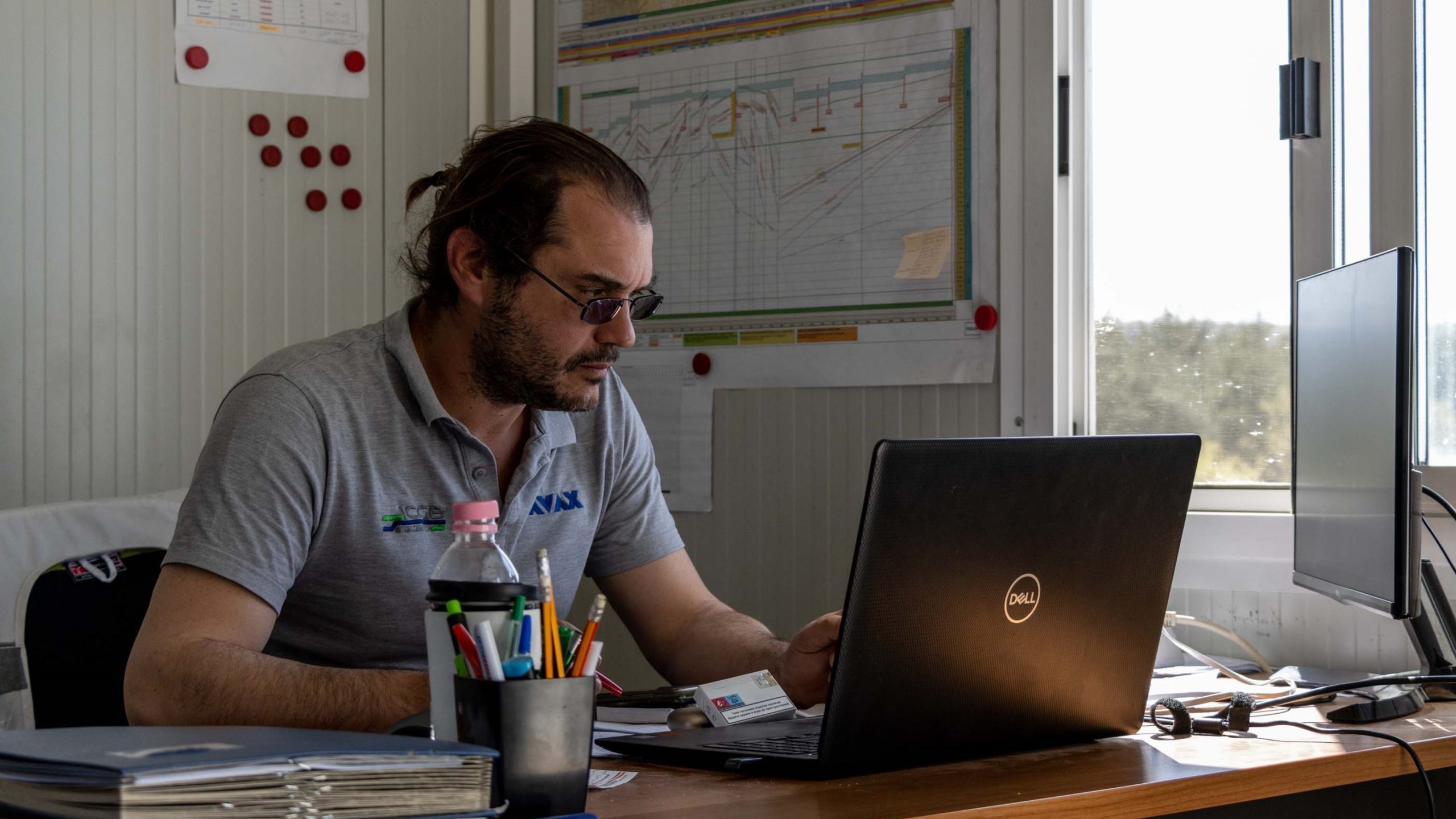
AVAX, one of the largest construction groups in Greece, began work on the pipeline in 2019. Some observers have blamed it for the delays, while the company cited political instability in Bulgaria, which held three parliamentary elections in 2021 to form a new government. “In Bulgaria, the pipeline got very political, and there was no one in government to take difficult decisions,” said Harris Destefanos, AVAX construction manager for ICGB in Bulgaria. “We were between a rock and a hard place, no matter how hard we worked, how many solutions we provided.”
Destefanos, a Greek from Thessaloniki who had studied in the United States and worked on the construction of TAP, drove me to see various ICGB work sites near Haskovo. I photographed sideboom cranes laying the 32-inch-in-diameter steel pipeline into a trench. I walked through a dispatching center that a few months back was just an empty field. He also took me to the spot where workers drilled the pipeline 30 meters beneath the Maritsa riverbed. The land had been backfilled, and the only sign of construction was a strip of bare earth on either side of the river. “There was so much activity here a few weeks back,” Destefanos said. “I wish you could have seen it.” He puffed on his electronic cigarette. “Now it seems like a dream.”
The ICGB’s current capacity of 3 bcm per year can eventually be increased to up to 5 bcm, bringing Azerbaijani gas not just to Bulgaria but other Balkans countries farther north like Romania, Serbia, North Macedonia and possibly even Ukraine. “What gives the ICGB strategic importance,” the journalist John Psaropoulos wrote, “is that it could soon become the means for supplanting Russian gas throughout the Balkans with liquefied natural gas from the US, Qatar, Egypt and elsewhere.”
The US has promised to export 15 bcm of LNG to the EU this year and up to 50 bcm annually until 2030. As Greece upgrades Revithoussa’s storage capacity and breaks ground on a second terminal in Alexandroupoli, it is becoming an important gateway for American LNG entering southeastern Europe.
Construction on the Alexandroupoli FSRU was inaugurated on May 3 with a high-profile launch event attended by the prime ministers of Greece, Bulgaria and North Macedonia, the president of Serbia and European Council President Charles Michel. The presence of so many Balkan leaders highlighted the terminal’s regional significance. All four countries have reserved capacity in the facility; Greece and Bulgaria each own a 20 percent share, and North Macedonia wants a share as well.
The FSRU, which is expected to begin operations in December 2023, will consist of an offshore processing unit to receive, store and reheat LNG to a gaseous state. The gas will be sent through an underwater pipeline parallel to the coast and land five kilometers east of Alexandroupoli at the village of Apalos near the airport. From there, it will connect with Greece’s national gas network and reach the landlocked Balkans via the ICGB. The new LNG gateway will provide 5.5 bcm of gas per year, further diversifying supplies while also bypassing Turkey.
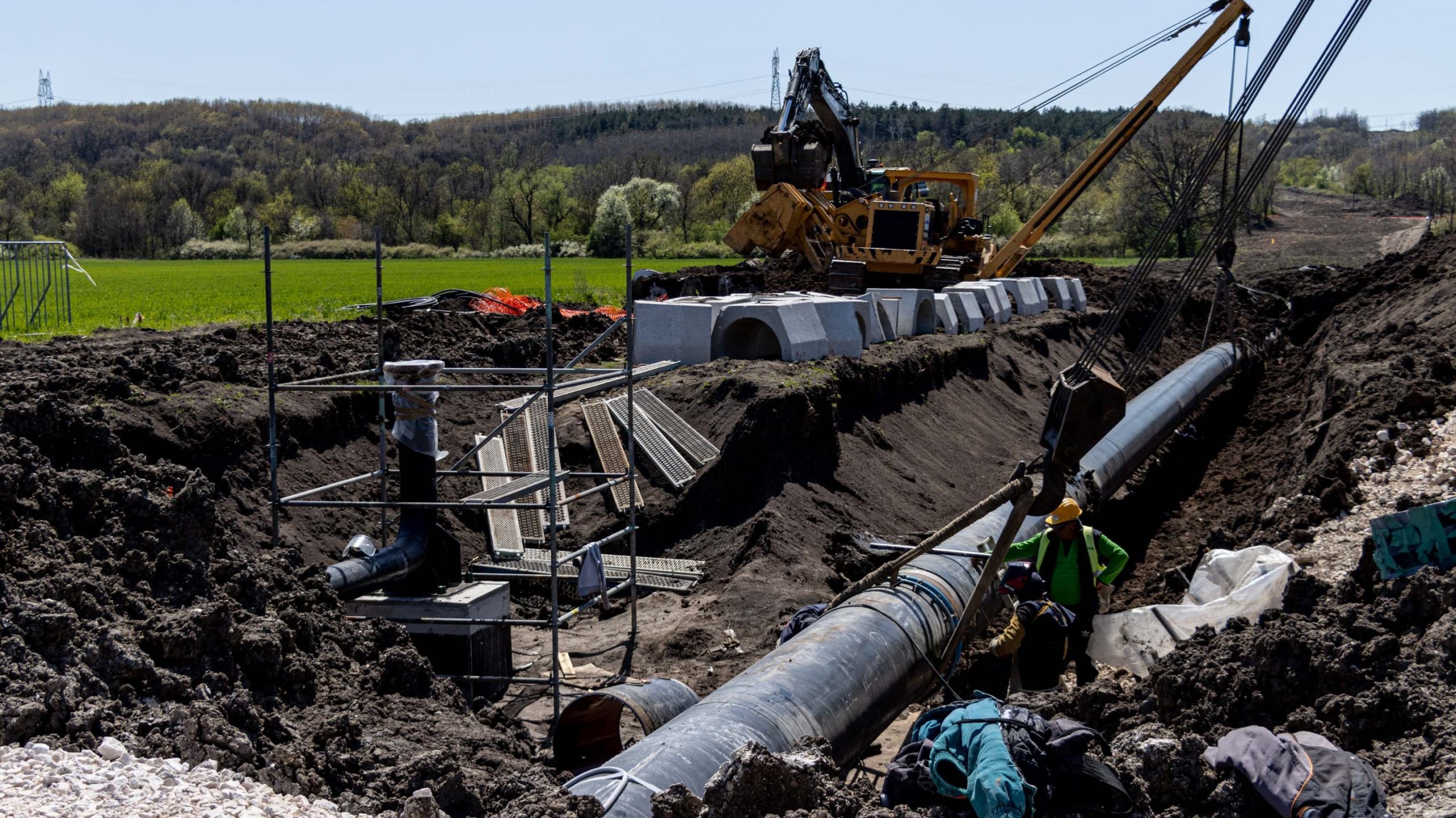
I met with Konstantinos Sifnaios, vice president and project director for the implementing company Gastrade, back in December 2021, weeks before it reached its final investment decision. He told me the firm had been working on the project with countries in the region for the past 10 years. Since the war broke out, Balkan demand for alternative gas sources has become so great that Gastrade recently obtained a license to develop a second FSRU in Alexandroupoli with similar capacity.
When I asked about the local impact of the project, Sifnaios said, “We would like to work with the local communities to see how they can most benefit from this project.” He estimated the FSRU could create 70-80 direct jobs while also spurring economic activity in associated areas like marine services, materials and hospitality services. Moreover, he said the FSRU would have “minimal impact” on the environment—few emissions and very little effect on flora and fauna.
So far, however, there seems to be a disconnect between intentions and actions. Pavlos Michailidis, an architect and city council member for the municipality of Alexandroupoli, expressed outrage on Twitter over an announcement recruiting FSRU personnel to work at the company’s Athens office. “Not one position in the city of Alexandroupoli!!!” he wrote.
Giorgos Papanastasiou, a wheat and cotton farmer who owns a gas station in Apalos, seconded this opinion. “There are no benefits for us, for the region,” he told me. “The office will be in Athens and people will be recruited there. I don’t know if they will open an office here in the future.”
Papanastasiou guided me through the fields north of Apalos to show me the four-kilometer path the FSRU pipeline will take after it reaches the shore. He told me the team that came to survey the site disturbed his and his neighbors’ fields without first communicating with them. He owned farmland in the pipeline’s path, and that would restrict what he could build or grow there.
“When TAP was built, they gave compensatory benefits to locals affected by the pipeline,” he told me. “So far, we haven’t received any information [from Gastrade]. We’re waiting to see what compensation they will offer to build the pipeline through our land.”
Near a village called Amfitri, we stopped at a blue-roofed metering and regulating station operated by the national gas network. Gastrade plans to construct its own block station adjacent to the existing station where gas from the FSRU will enter the national system. A few meters away, I saw yellow metal posts marking TAP’s route across Thrace. If the FSRU and TAP were to connect in the future, this would be an easy connection point.
After the tour, Papanastasiou and I sat around his gas station on worn rolling chairs while friends and relatives dropped by to say hello. One friend, a white-haired fisherman, asked me if I’d heard anything about LNG raising the temperature of the sea. Local fishermen worried the FSRU would raise the sea temperature by 2 to 3 degrees Celsius, causing problems with the fish and affecting their livelihoods. From what I heard, it seemed like Gastrade should move quickly to address locals’ concerns.
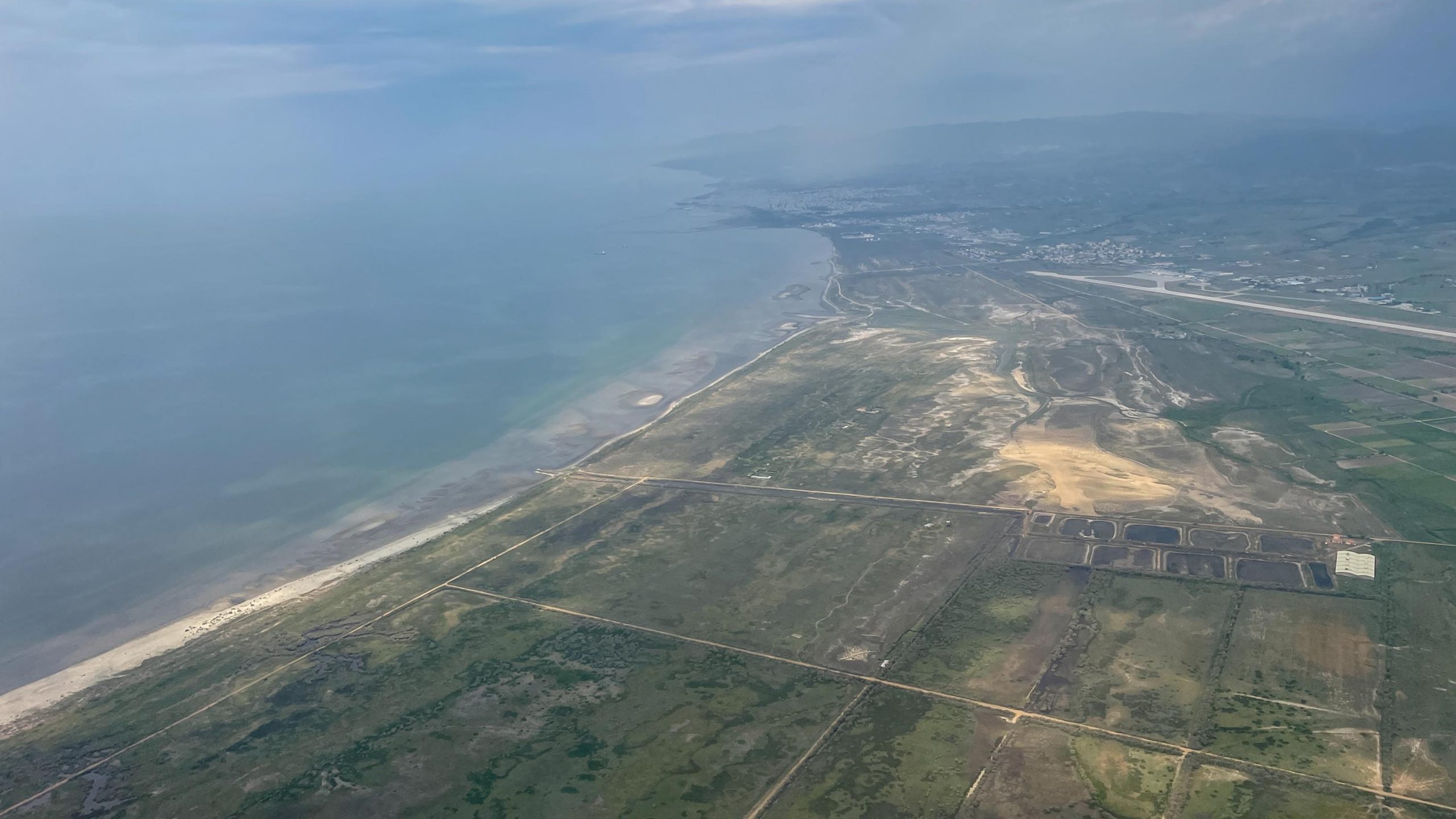
Reconciling gas infrastructure with Greece’s green transition
Will Russia’s war speed or retard European progress toward the green energy agenda? Conventional wisdom says fossil fuel development, including gas, would delay the green transition. Indeed, under threat of being cut off from Russian gas, Greece’s short-term contingency plan extends the operation of costlier, dirtier lignite plants previously set to close in 2023 and switches dual fuel-burning plants from gas to diesel. Greece passed its first climate law at the end of May, committing to wean itself off lignite in electricity production by 2028.
But Nikos Tsafos disagrees. In fact, there is “no real tension” between the development of new gas routes and decarbonization, he argues, since Europe had already planned to use Russian gas for years. Now the EU could meet both goals by future-proofing new projects or exporting LNG to help Asia reduce emissions once its own energy transition is further underway. Europe could also take advantage of gas fields such as Aphrodite in Cyprus in the short term without threatening its climate strategy. “With its purchasing and financial power,” Tsafos writes, “Europe can ensure that gas is produced with the highest environmental standards and without locking in emissions.”
My source from the Greek energy market agreed. “I believe the crisis will speed up the transition to the green period,” he said. “We want to be less dependent on Russian gas and gas in general. The only alternative is to cut gas from the energy mix and supplant it with other green energy.”
The operators of Thrace’s energy projects have already taken steps to future-proof their infrastructure. Many are involved in “White Dragon” a Greek project to produce green hydrogen that is under consideration for EU funding. The TAP Greek Branch estimates that up to 10 percent of TAP’s capacity can be used to transport hydrogen, although the plan is still in its early stages. TAP is waiting for the Greek government to issue a regulatory framework for hydrogen production and transport, and the pipeline will need to be expanded before hydrogen can be accommodated.
The Copelouzos Group, a shareholder in the Alexandroupoli FSRU, signed contracts with General Electric last fall to build an 840 MW high-efficiency gas-fired power plant in Alexandroupoli’s industrial zone. The plant is expected to come online in early 2024, roughly the same time as the FSRU. The group has also developed wind parks in Thrace’s Rhodope mountains.
“We are very active in Evros,” said Sifnaios, who also serves as group energy director for the Copelouzos Group. “We have the first license for offshore wind parks in the Thracian Sea. We have a license for the development of energy storage projects in Alexandroupoli. We are investing in the region and we’ve been investing for a long time now.”
But the hard truth is that energy diversification takes time, with few quick fixes. “I think the most important thing is just keep doing what we’re doing, only do it faster,” former Ambassador Geoffrey Pyatt said. “We need to continue working on the diversification of gas in particular, energy security, but also accelerating the green transition.”
Greece has benefitted from moving earlier than other countries to reduce its dependence on Russian gas. Now, because of its strategic location, it is poised to play a major role in Southern Europe’s post-war energy map, transporting LNG to its landlocked Balkan neighbors and eventually connecting European electricity grids with Africa and Asia to exchange renewable energy. Alexandroupoli sits at the center of these developments. Combined with an upcoming port privatization and the upgrade of the railway network, the city stands to gain a great deal in the coming years as new infrastructure traverses historical crossroads.

